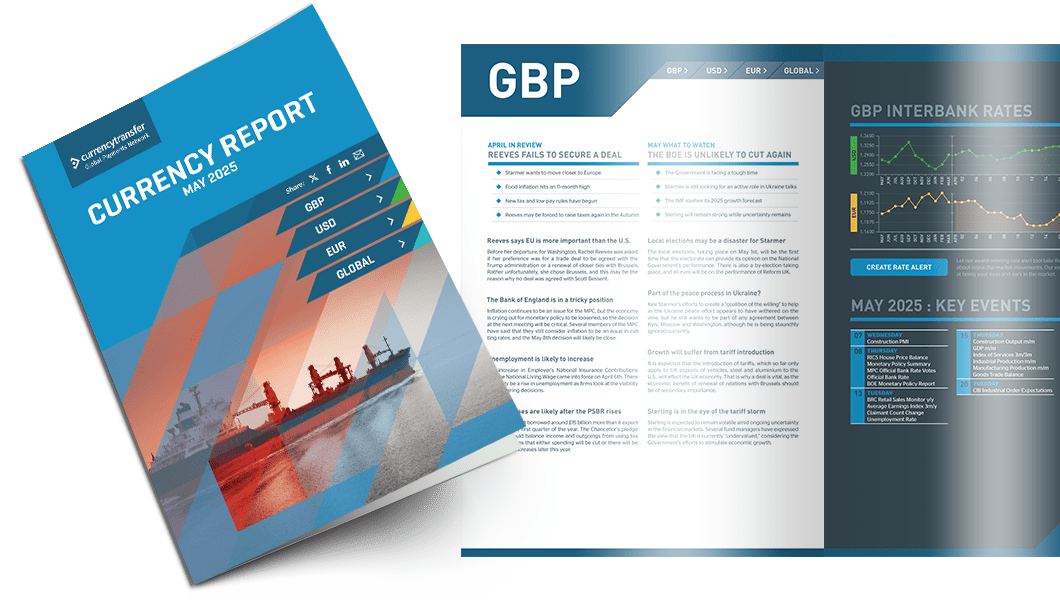
Highlights
- The economy is still vulnerable to global shocks
- Experts believe that a prolonged port strike will damage the US economy
- The German Economy Minister believes that the ECB is acting too slowly
House Building could add £330 billion to the economy over five years
In the last year, house building in England and Wales generated £53.3 billion of economic output and supported 834,000 jobs, underlining the economic potential of delivering the homes the country needs.
The report, entitled ‘The Economic Footprint of Home Building in England and Wales’, illustrates the boost to growth Labour can achieve by hitting its target of 1.5 million homes – which would support an additional 350,000 jobs and £100 billion in economic activity across the parliament compared to the last five years.
The British economy is still susceptible to shocks in financial markets amid an uncertain geopolitical climate and elevated levels of global public debt, the quarterly report released yesterday by the Bank of England reveals.
The BoE cautions that markets are prone to significant fluctuations that can impact the cost and availability of credit for households and businesses, as detailed in the report from its Financial Policy Committee.
While tensions in the Middle East could potentially drive up oil prices, the FPC has not yet observed any direct effects on the UK economy. Nonetheless, it emphasizes that the current period of heightened geopolitical risk may have broader repercussions.
Finance professionals surveyed by the BoE in a biannual study identify geopolitical tensions, encompassing issues beyond the Middle East and the conflict in Ukraine, as their foremost concern.
Furthermore, “demographic and climate changes,” along with elevated levels of public debt in major economies, present additional risks. The FPC warns that potential shocks may be exacerbated by non-bank finance, commonly referred to as “shadow finance,” which is less regulated than traditional banking institutions.
In September 2022, pension fund investments contributed to an increase in long-term borrowing costs for the UK following the budget introduced by the short-lived Prime Minister Liz Truss, noted for its massive and unfunded expenditures, necessitating intervention by the BoE.
Sterling remains the best-performing currency versus the dollar in 2024. It has gained 4.2% during the first three quarters of the year. Yesterday it lost ground, falling to a low of 1.3249 as the dollar’s recovery continued, and closed at 1.3267.

Read our latest currency report
Most impactful events planned this month and how they could impact your business
Fed chair tries to push back against another fifty-point cut
It has been clear that he was “outvoted” by his colleagues on the FOMC and likely voted for the recent 50 basis point cut for the sake of unity, leaving Fed Governor, Michelle Bowman, to be the only dissenter.
The minutes of the latest FOMC meeting will be published next week, and observers will be keen to know exactly what the feeling is about the future loosening of monetary policy.
Throughout most of the past year, Powell has used the sobriquet of being driven by the data which has become a cliché, however, as things have turned out the cliché has been true.
The Fed faced no genuine pressure to cut interest rates, Central Banks rarely loosen policy while the economy is growing, but they clearly saw something in the data to make them act proactively.
In the aftermath of the Monetary Policy statement by the Fed, and prior to the presentation of the minutes, the Fed Speak assumes a lot of importance.
The macro cues are not only taken from the Fed statement and the minutes but also the speeches given in the interim period by the key functionaries of the FOMC.
On Monday, Jerome Powell addressed the National Association for Business Economics (NABE) Annual Meeting, in Nashville, Tennessee; wherein he laid out his broad monetary stance and how he sees the rates panning out.
Powell once again emphasized that the Fed would be flexible, but his underlying hawkishness shone through.
The USD was declining after the 50 BPS FED rate cut, but Powell pushed back on another such cut on Monday, helping reverse the USD.
“Employment was softening in the US, but it has stabilized, together with other economic indicators, which have relaxed the nerves at the FOMC, and now the rate cut process will be slower than what the market had been expecting” according to Powell.
This week’s multitude of economic data from several Federal sources regarding the employment market which culminates with the release of the non-farm payrolls on Friday began on Tuesday with the publication of JOLTS job openings figures, which rose to 8.04 million from an upwardly revised 7.1 million in August.
143k private sector jobs were created in September, up from 103k up from in August.
Today sees the release of Challenger job cuts and weekly jobless claims. Both are expected to be in line with market expectations.
The Atlanta Fed President, Raphael Bostic, has spoken this week of his intention to vote in favour of another rate cut if the next two employment reports continue to show a decline in the number of jobs created. The FOMC will have the benefit of both September’s and October’s numbers before its next meeting.
Two Fed Presidents, who rarely speak to reporters, have given speeches this week. St Louis Fed President Alberto Musalem commented that the Fed should return to cutting rates gradually after the fifty-point cut it agreed in September, while Beth Hammock from Cleveland confirmed that she will be driven by the data at her first meeting since being appointed.
The dollar index has continued its recent recovery from the shock of the fifty-point rate cut. Yesterday, it climbed to a high of 101.69 and closed at 101.64.
Energy prices have been the most key factor in lower inflation
“We expect the recovery to strengthen over time, as rising real incomes and the gradually fading effects of restrictive monetary policy should support consumption and investment,” de Guindos told a conference yesterday.
He went on to say that risks in the economy are skewed towards the downside, although he gave no clue as to what he expects the outcome of the next ECB Governing Council meeting will be.
According to former Central Bank President Mario Draghi’s long-awaited assessment, Europe can address its relative decline via an extensive list of economic reforms and a huge investment boost to be financed, at least partially, by common debt.
And now that the report is out, it’s up to the new European Commission to drive this agenda forward. While well-received in Brussels, the question of what exactly the common debt should finance, and how it would foster innovation, has been sidelined.
Starting from the transatlantic divide in productivity, due to the weakness of the EU’s high-tech industry, Draghi’s report recognizes that European enterprises are caught in a “middle-tech trap,” a term coined at the Institute for European Policy Making at Bocconi University in Milan, which means that most large EU companies are in middle-tech sectors and are languishing there because they don’t want to leave the field they know.
The current travails of the German automotive sector, for example, clearly illustrate how this is a losing strategy.
The German Minister for the Economy, Robert Habeck, spoke yesterday of his concern that the ECB is acting too slowly in loosening monetary policy. Speaking at an event hosted by the BGA trade association, Habeck also said Germany had got through three-quarters of the economic crisis caused by Russia’s full-scale invasion of Ukraine.
Habeck, a Green Party Member, is desperately trying to get the German Automotive industry back on track following concerns over Volkswagen’s cost-cutting measures, which may include plant closures.
The Green Party is in its worst crisis since it was founded 44 years ago: The leaders of the party and its junior organization resigned following election defeats. This could be Vice Chancellor Robert Habeck’s moment. to shine. Germany needs a significant realignment and update of its industrial and manufacturing sectors while accepting the
need for more “green” initiatives. The country has lurched to the right in recent elections and needs a strong voice for the “moderate centre” to avoid further disruption.
The euro appears to have “run its race” in the short term. Yesterday it fell again, reaching a low of 1.1032 and closing at 1.1044.
Have a great day!

Exchange rate movements:
02 Oct - 03 Oct 2024
Click on a currency pair to set up a rate alert
Alan Hill
Alan has been involved in the FX market for more than 25 years and brings a wealth of experience to his content. His knowledge has been gained while trading through some of the most volatile periods of recent history. His commentary relies on an understanding of past events and how they will affect future market performance.